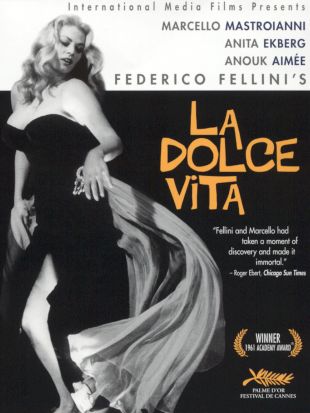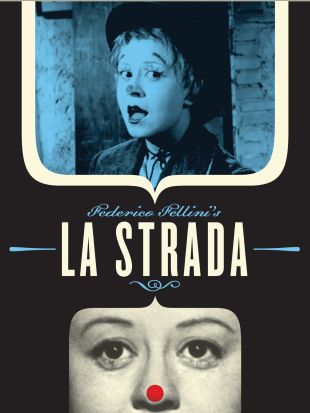One of the most visionary figures to emerge from the fertile motion picture community of postwar-era Italy, Federico Fellini brought a new level of autobiographical intensity to his craft; more than any other filmmaker of his era, he transformed the realities of his life into the surrealism of his art. Though originally a product of the neorealist school, the eccentricity of Fellini's characterizations and his absurdist sense of comedy set him squarely apart from contemporaries like Vittorio De Sica or Roberto Rossellini, and at the peak of his career his work adopted a distinctively poetic, flamboyant, and influential style so unique that only the term "Felliniesque" could accurately describe it. Born in Rimini, Italy, on January 20, 1920, Fellini's first passion was the theater, and at the age of 12 he briefly ran away from home to join the circus, later entering college solely to avoid being drafted. Prior to the outbreak of World War II, he wrote and acted with his friend Aldo Fabrizi, and during wartime he composed radio sketches for the program Cico e Pallina, meeting his future wife, actress Giulietta Masina. Additionally, Fellini worked as an artist on fumetti (Italy's illustrated magazines), and occasionally even made his living as a caricaturist at Roman restaurants. He only entered film with the aid of Fabrizi, who recruited Fellini to continue supplying stories and ideas for his performances; between 1939 and 1944, the two men worked in tandem on a number of largely forgotten comedies, among them No Me Lo Dire, Quarta Pagina, and Campo de Fiori. The pivotal moment in Fellini's early career came in the days following the Allied Forces' 1945 liberation of Italy, when he and Fabrizi both began working with the young Roberto Rossellini. Rossellini's initial plan was to film a fictionalized account of the Germans' shooting of a local priest. With Fellini on board as a screenwriter, however, the film eventually grew to become Roma, Città Aperta, a landmark of Italian neorealism and one of the most widely acclaimed pictures of its era. For the follow-up, 1946's Paisa, Fellini graduated to the position of assistant director, later collaborating on films by Pietro Germi (including In Nomine Della Legge and Il Cammino Della Speranza) and Alberto Lattuda (Il Delitto di Giovanni Episcopo and Il Mulino del Po), among others. In 1948, Fellini completed the screenplay for Il Miracolo, the second and longer section of Rossellini's two-part effort Amore. Here Fellini's utterly original worldview first began to truly take shape in the form of archetypal characters (a simple-minded peasant girl and her male counterpart, a kind of holy simpleton), recurring motifs (show business, parties, the sea), and an ambiguous relationship with religion and spirituality, a relationship further explored in his script for Rossellini's 1949 Francesco, Giullare di Dio. In 1950, Fellini made his first attempt at directing one of his own screenplays (albeit with the technical guidance of Alberto Lattuda); the result was Luci del Varieta, which further developed his fusion of neorealism with the atmosphere of surrealism. After two more screenplays -- 1951's La Citta si Difende and 1952's Il Brigante di Tacca del Lupo, both directed by Pietro Germi -- Fellini again took over the directorial reins for the romantic satire Lo Sciecco Bianc. The film marked his first work with composer Nino Rota, who emerged among the key contributors to his work throughout the remainder of his career. Fellini's initial masterpiece, I Vitteloni, followed in 1953. The first of his features to receive international distribution, it later won the Silver Lion at the Venice Film Festival, the first of so many similar honors that eventually an entire room in his house was devoted solely to housing his awards. The brilliant La Strada followed in 1954, also garnering the Silver Lion as well as the Academy Award for Best Foreign Language Picture and some 50 other worldwide prizes and citations. The picture's success brought his singular combination of the sublime and the grotesque to international fame, launching wife and star Masina to global stardom as well. After helming 1955's Il Badone, Fellini and a group of screenwriters (including a young Pier Paolo Pasolini) began work on 1956's Le Notti di Cabiria; the completed film won an Academy Award. Upon writing the screenplay for Viaggio con Anita, a tale based on the death of his father which remained unfilmed before Mario Monicelli agreed to direct it in 1979, Fellini mounted 1959's La Dolce Vita, perhaps his most well-known film. The first of his pictures to star actor Marcello Mastroianni, who would become Fellini's cinematic alter ego over the course of several subsequent collaborations, its portrait of sex and death in Rome's high society created a tremendous scandal at its Milan premiere, where the audience booed, insulted, and spat on the director. Regardless, La Dolce Vita won the Palm d'Or at the Cannes Film Festival, and remains a landmark in cinematic history. The success afforded to the film left Fellini in a state of confusion as he considered his next project. Ultimately, his writer's block became the subject of perhaps his greatest film, 1962's 8 1/2, the story of a filmmaker (Mastroianni) attempting to mount a movie which remains unmade. Again, the international acclaim was virtually unanimous, with yet another Oscar forthcoming, and after winning the Great Prize at the Moscow Film Festival, he never again entered festival competition. With 1965's Giulietta Degli Spiriti, Fellini worked for the first time in color. After experimenting with LSD under the supervision of doctors, he began scripting Il Viaggio di G. Mastorna. Over a year of pre-production followed, hampered by difficulties with producers, actors, and even a jury trial. Finally on April 10th, 1967, Fellini suffered a nervous breakdown, resulting in a month-long nursing home stay. Ultimately, he gave up on ever bringing Il Viaggio di G. Mastorna to the screen, and his new producer, Alberto Grimaldi, was forced to buy out former producer Dino De Laurentis for close to half a billion liras. As the decade drew to a close, Fellini returned to work with a vengeance, first resurfacing with Toby Dammitt, a short feature for the collaborative film Tre Passi nel Delirio. Turning to television, he helmed Fellini: A Director's Notebook, a one-hour special for NBC, followed by the feature effort Fellini Satyricon. I Clown followed in 1970, with Roma bowing in 1972. Amarcord, a childhood reminiscence, won a fourth Academy Award in 1974, but as criticism that his work was becoming far too eccentric and self-indulgent continued to mount, it proved to be his final international success. After acting in Paul Mazursky's Alex in Wonderland and Ettore Scola's C'eravamo Tanto Amati, he shot 1976's Il Casanova di Federico Fellini, which found favor only in Japan. After both 1979's Prova d'Orchestra and 1980's La Citta delle Donne also proved unsuccessful, Fellini turned to publishing with Fare un Film, an anthology of notes about his life and work. E la Nave Va and Ginger e Fred followed in 1983 and 1985 respectively, but by the time of 1987's L'Intervista, he was facing considerable difficulty finding financing for his projects; consequently, 1989's La Voce Della Luna was his last completed film. In the early years of the 1990s, Fellini helmed a handful of television commercials, and in 1993 he won his fifth Academy Award for a lifetime of service to the film industry. On the day after his fiftieth wedding anniversary, Federico Fellini suffered a massive stroke and lapsed into a coma; he never recovered, and died on October 31, 1993. He was 73 years old.
Federico Fellini
Share on
Biography by AllMovie
Movie Highlights
Factsheet
- His love of theater started at an early age, prompting him to run away and join the circus when he was 12.
- Before directing films, he held such jobs as magazine cartoonist and radio scriptwriter.
- His breakout film, I Vitelloni (1953), about a group of young men on the brink of adulthood, won the Silver Lion at the Venice Film Festival.
- Nights of Cabiria (1957), starring wife Giulietta Masina as the hooker with a heart of gold, inspired the 1967 Broadway musical Sweet Charity, directed and choreographed by Bob Fosse.
- With La Dolce Vita (1960), he began a longtime collaboration with actor Marcello Mastroianni, who regularly played his onscreen alter ego.
- The pressure to duplicate the success of La Dolce Vita resulted in writer's block, which ultimately inspired his next and most critically hailed film, 8½.
- The term Felliniesque refers to the fantastical and surreal style of his later films.


